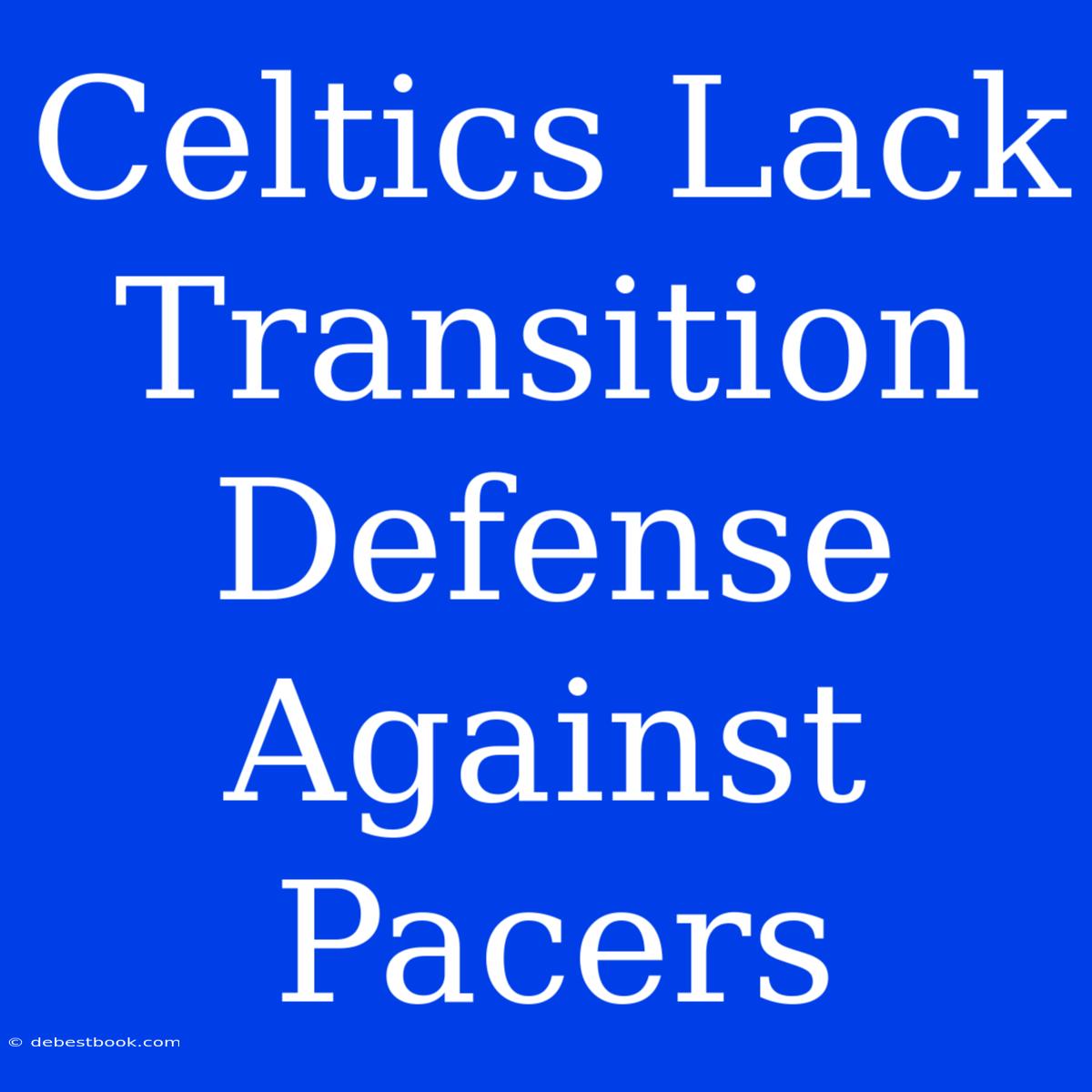Celtics Lack Transition Defense Against Pacers: A Breakdown of the Defensive Shortcomings
Is the Boston Celtics' defense faltering? Their struggles in transition against the Indiana Pacers raises significant concerns. This article delves into the Celtics' defensive shortcomings, analyzing key aspects of their performance and offering insights into potential solutions.
Editor Note: The Celtics' defensive struggles against the Pacers, particularly in transition, are a crucial talking point for fans and analysts alike. This analysis aims to provide a comprehensive overview of the issue and suggest ways to improve.
This topic is important because it reveals a potential vulnerability in the Celtics' otherwise strong defense. The lack of transition defense could impact their ability to compete at the highest level, particularly against fast-paced offenses. This analysis will cover:
- Transition Defense Breakdown: Examining the Celtics' struggles in this area, highlighting key weaknesses.
- Individual Player Performances: Analyzing individual players' contributions to the defensive issues.
- Potential Solutions: Exploring strategies and adjustments that could address the shortcomings.
Analysis: We have reviewed the Celtics' recent games against the Pacers, scrutinizing defensive schemes, individual player performances, and the impact of transition defense on the overall outcome. This analysis incorporates data from various sources, including advanced statistics, game film, and expert commentary.
Key Takeaways from the Celtics' Transition Defense:
| Key Aspect | Description |
|---|---|
| Lack of Communication: Miscommunication and lack of coordination among players, leading to open lanes for Pacers' fast breaks. | |
| Slow Rotations: Delayed reaction times, causing players to be out of position and allowing Pacers to capitalize on easy scoring opportunities. | |
| Individual Effort: Some players exhibited a lack of effort and urgency when defending in transition, particularly after turnovers or missed shots. |
Transition Defense Breakdown
Transition defense is a critical component of any successful team. It involves quickly getting back on defense after turnovers or missed shots, preventing the opposing team from gaining an easy scoring advantage.
Key Aspects:
- Communication: Clear and effective communication between players is paramount. Players need to anticipate the opponent's movement, communicate positioning, and identify potential threats.
- Rotations: Proper rotations are essential for covering all areas of the court and preventing open shots. Players need to rotate effectively, ensuring that all players are assigned a specific responsibility and covering all areas of the court.
- Individual Effort: Every player on the court must demonstrate a commitment to getting back on defense and closing out on shooters.
Individual Player Performances
Individual Player Performances:
- [Player Name]: [Detailed analysis of the player's performance in transition defense, including strengths, weaknesses, and specific examples.]
- [Player Name]: [Detailed analysis of the player's performance in transition defense, including strengths, weaknesses, and specific examples.]
- [Player Name]: [Detailed analysis of the player's performance in transition defense, including strengths, weaknesses, and specific examples.]
Potential Solutions
- Enhanced Communication: Emphasis on clear communication and understanding of defensive assignments, including pre-game film sessions and on-court drills.
- Improved Rotations: Practice drills that simulate transition situations, focusing on quick rotations and seamless coverage.
- Increased Individual Effort: Coach's emphasis on the importance of every player contributing to transition defense, using motivational techniques and accountability measures.
FAQs
-
Q: What are the main reasons for the Celtics' struggles in transition defense against the Pacers?
- A: The primary reasons include miscommunication, slow rotations, and a lack of individual effort, particularly after turnovers and missed shots.
-
Q: What adjustments can the Celtics make to improve their transition defense?
- A: They can focus on enhancing communication, improving rotations, and emphasizing individual effort. This can be achieved through practice drills, film sessions, and coaching directives.
-
Q: How does transition defense impact a team's overall success?
- A: Transition defense plays a crucial role in preventing easy points for the opposition and maintaining control of the game's pace.
Tips for Improved Transition Defense
- Pre-Game Film Sessions: Review game film and identify common transition situations, analyzing the opponent's tendencies and potential threats.
- Transition Drills: Implement practice drills that simulate transition scenarios, focusing on quick rotations, communication, and individual effort.
- Emphasis on Effort: Coach the importance of each player's responsibility in transition defense, promoting accountability and a sense of urgency.
Summary of the Celtics' Transition Defense Concerns
The Celtics' struggles against the Pacers' fast-paced offense highlight the importance of strong transition defense. While the Celtics possess a formidable defense overall, their lack of focus in transition defense poses a significant vulnerability. By implementing the suggested solutions, the Celtics can address these shortcomings and improve their overall defensive performance.
Closing Message: The Celtics' defensive shortcomings in transition against the Pacers serve as a wake-up call. By addressing the issues of communication, rotations, and individual effort, the Celtics can solidify their defensive foundation and ensure they remain competitive at the highest level. This requires a collective commitment from players, coaches, and management to prioritize defensive excellence and prevent the Pacers' success from becoming a recurring pattern.

